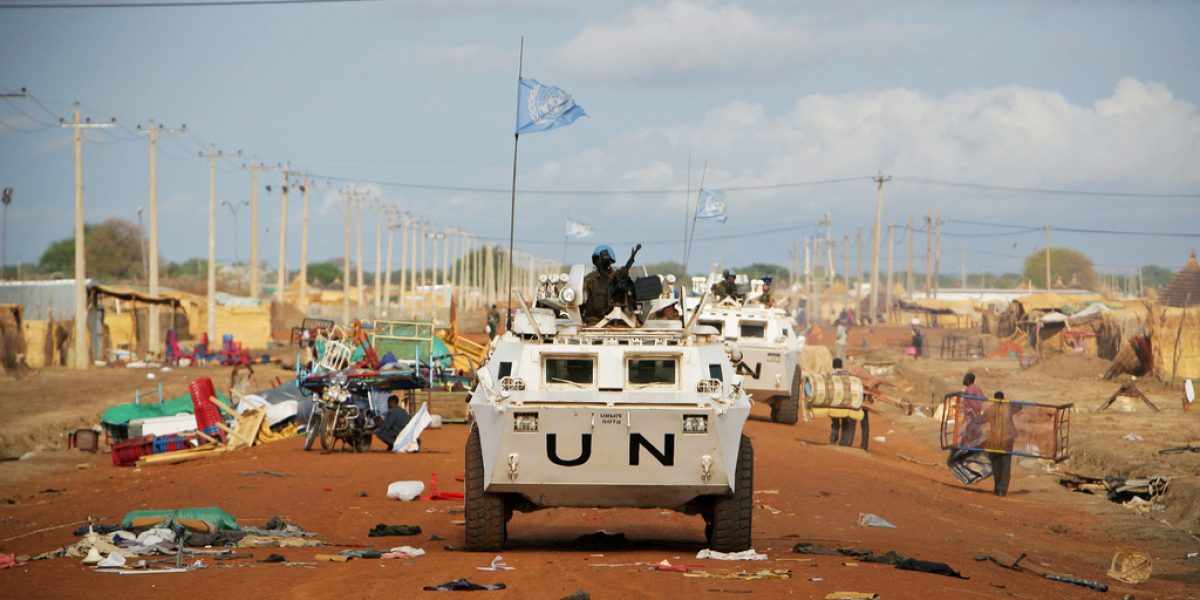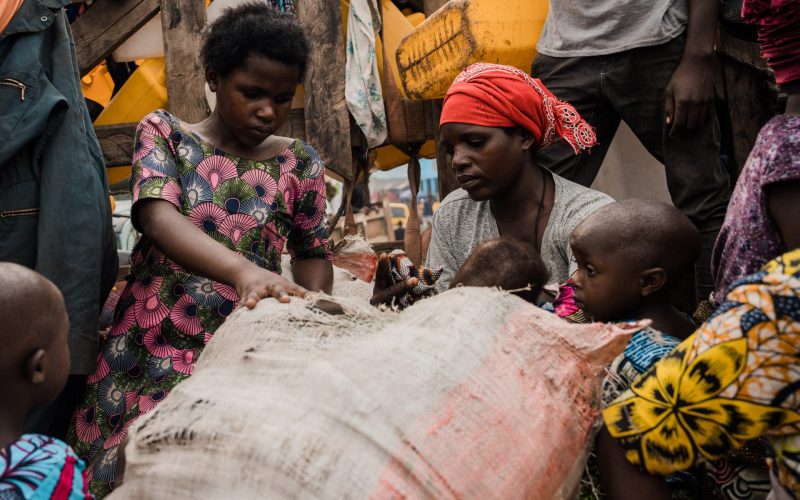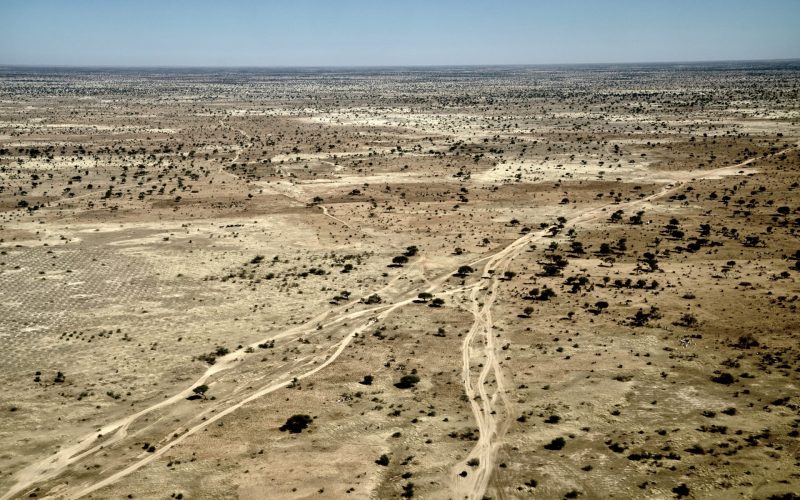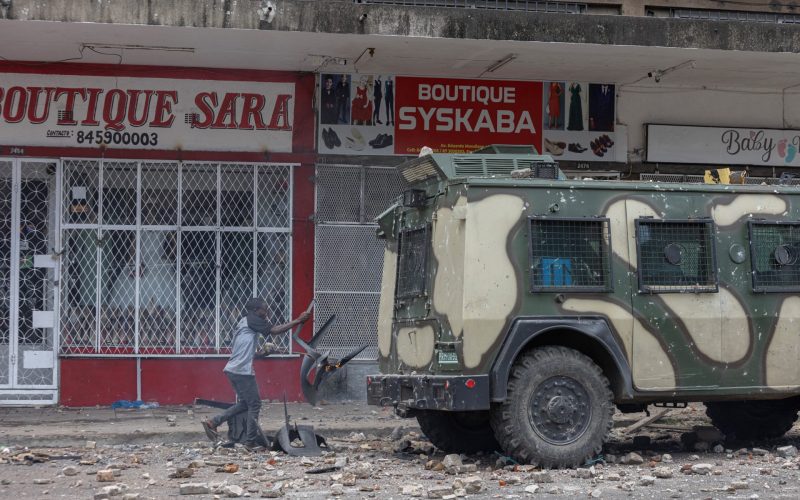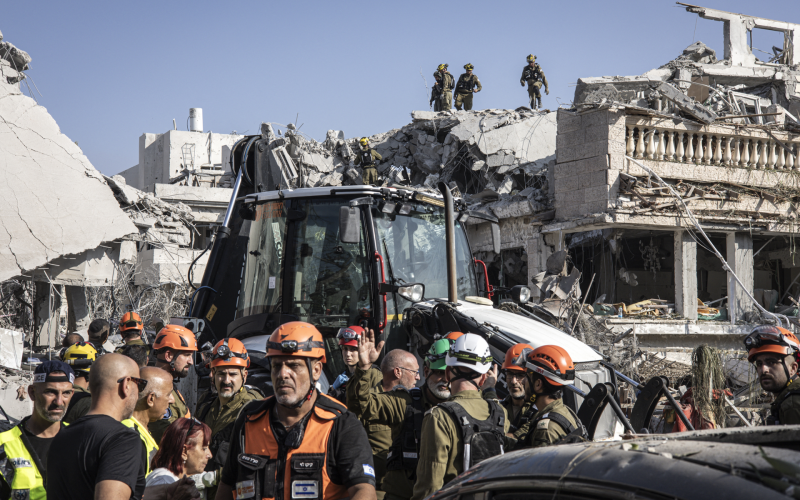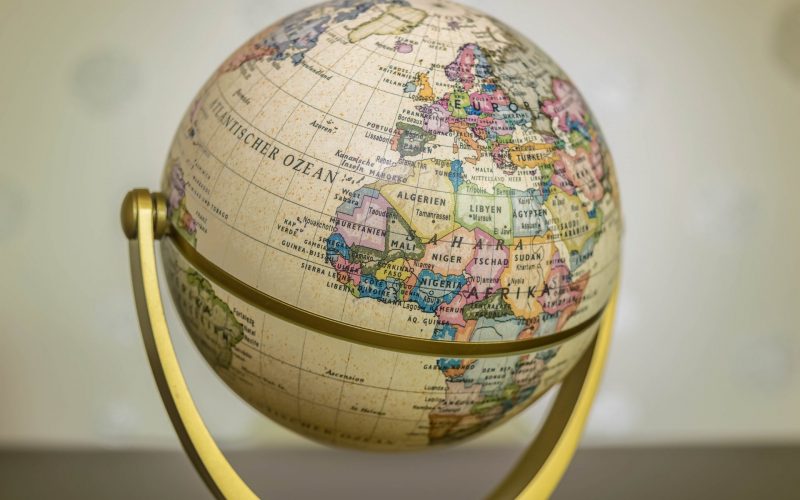The United States Congress and Secretary of State Colin Powell claim that genocide has occurred in Darfur. The European Union says it is not genocide. So does the African Union.
Nigerian President Olusegun Obasanjo, also the current chairperson of the African Union, told a press conference at the United Nations in New York on September 23: ‘Before you can say that this is genocide or ethnic cleansing, we will have to have a definite decision and plan and programme of a government to wipe out a particular group of people. Then we will be talking about genocide, ethnic cleansing. What we know is not that. What we know is that there was an uprising, rebellion, and the government armed another group of people to stop that rebellion. That’s what we know. That does not amount to genocide from our own reckoning. It amounts to, of course, conflict. It amounts to violence.’
Is Darfur genocide that has happened and must be punished? Or is it genocide that could happen and must be prevented? I will argue the latter.
Sudan today is the site of two contradictory processes. The first is the Naivasha peace process between the government of Sudan and the Sudan People’s Liberation Army (SPLA) on ending Africa’s longest festering civil war. The second is the armed confrontation between an insurgency and anti-government militias in the western region of Darfur. There is a need to think of the south and the west as different aspects of a connected process. I will argue that this reflection should be guided by a central objective: to reinforce the peace process and to demilitarise the conflict in Darfur. (See story, page 8)
The peace process in the south has split both sides to the conflict. Tensions within the ruling circles in Khartoum and within the opposition SPLA have given rise to two anti-government militias: the Justice and Equality Movement (JEM), which has historical links to the Islamist regime, and the Sudan Liberation Army, which has ties to the southern guerrilla movement.
Dangerous rifts
The JEM organised as part of the Hassan al-Turabi faction of the Islamists. Darfur, historically the mainstay of the Mahdist movement, was al-Turabi’s major claim to political success in the last decade. When the Khartoum coalition – between the army officers led by Umar Hasan Ahmad al-Bashir and the Islamist political movement under al-Turabi – split, the Darfur Islamists fell out with both sides. The JEM was organised in Khartoum as part of an agenda for regaining power. It has a more localised and multi-ethnic presence in Darfur and has been home to many who have advocated an ‘African Islam.’
The SLA is linked to SPLA, which first tried to expand the southern-based armed movement to Darfur in 1990 but failed. The radical leadership of that thrust was decapitated in a government assault. Not surprisingly, the new leadership of SLA has little political experience.
The present conflict began when the SLA mounted an ambitious and successful assault on El-Fashar airport on April 25, 2003, on a scale larger than most encounters in the southern civil war.
The government in Khartoum is also divided – between those who pushed the peace process and those who believe too much was conceded in the Naivasha talks. This faction, the security cabal in Khartoum, responded by arming and unleashing several militias known as the Janjaweed. The result is a spiral of state-sponsored violence and indiscriminate spread of weaponry.
In sum, all those opposed to the peace process in the south have moved to fight in Darfur, even if on opposing sides. The Darfur conflict has many layers; the most recent but the most explosive is that it is the continuation of the southern conflict in the west.
For anyone reading the press today, the atrocities in Sudan are synonymous with a demonic presence – the Janjaweed, the spearhead of an ‘Arab’ assault on ‘Africans.’ The problem with the public discussion of Darfur and Sudan is not simply that we know too little; it is also the representation of what we do know. To understand the problem with how known facts are being represented, I suggest we face three issues.
First, as a proxy of those in power in Khartoum, the Janjaweed are not exceptional. They reflect a broad African trend. Proxy war spread within the continent with the formation of Mozambican resistance movement Renamo by the Rhodesian and South African security cabal in the early 1980s. Other examples in the East African region include the Lord’s Resistance Army in northern Uganda, the Hema and Lendu militias in Ituri in eastern Congo and, of course, the Hutu militia in post-genocide Rwanda. Like the Janjaweed, all these combine different degrees of autonomy on the ground with proxy connections above ground.
Second, all parties involved in the Darfur conflict – whether they are referred to as ‘Arab’ or as ‘African’ – are equally indigenous and equally black. All are Muslims and all are local. To see how the corporate media and some of the charity-dependent international NGOs consistently racialise representations, we need to distinguish between different kinds of identities.
Let us begin by distinguishing between three different meanings of Arab: ethnic, cultural and political. In the ethnic sense, there are few Arabs worth speaking of in Darfur, and only a very tiny percent in Sudan generally. In the cultural sense, ‘Arab’ refers to those who have come to speak Arabic as a home language and, sometimes, to those who are nomadic in lifestyle. In this sense, many have become Arabs. From the cultural point of view, one can be both African and Arab – an African who speaks Arabic, in other words, which is what the ‘Arabs’ of Darfur are. For those given to thinking of identity in racial terms, it may be better to think of this population as ‘Arabised’ rather than ‘Arab.’
Then there is ‘Arab’ in the political sense. This refers to a political identity called ‘Arab’ that the ruling group in Khartoum has promoted at different points as the identity of power and of the Sudanese nation. As a political identity, ‘Arab’ is relatively new to Darfur. The region was home to the Mahdist movement whose troops defeated the British and slayed Governor-General Charles Gordon a century ago. Darfur then became the base of the party organised around a Sufi order known as the Ansar. This party, called the Umma Party, is currently led by the grandson of the Mahdi, Sadiq al-Mahdi. The major change in the political map of Darfur over the past decade was the growth of the Islamist movement, led by al-Turabi. Politically, Darfur became ‘Islamist’ rather than ‘Arab.’
Like Arab, Islam too needs to be understood not just as a cultural (and religious) identity but also as a political one, thus distinguishing the broad category of believers called Muslims from political activists called Islamists. Historically, Islam as a political identity in Sudan has been associated with political parties based on Sufi orders – mainly the Umma Party based on the Ansar and the DUP based on the Khatamiyya. In sharp contrast to the strongly Sudanese identity of these ‘sectarian’ and ‘traditional’ parties is the militant, modernist and internationalist orientation of the type of political Islam championed by al-Turabi and organised as the National Islamic Front. Not only in its predominantly urban social base but also in its methods of organisation, the NIF was poles apart from ‘traditional’ political Islam, and in fact consciously emulated the Communist Party. Unlike the ‘traditional’ parties which were mass-based and hoped to come to power through elections, the NIF – like the CP – was a cadre-based vanguard party which hoped to take power in alliance with a faction in the army. The fulfillment of this agenda was the 1989 coup which brought Turabi’s NIF to power in alliance with the al-Bashir faction in the army.
As a political identity, ‘African’ is even more recent than ‘Arab’ in Darfur. I have referred to an attempt by the SPLA in 1990 to confront the power in Khartoum as ‘Arab’ and to rally the opposition under the banner of ‘African.’ Both the insurgency that began 18 months ago and the government’s response to it are evidence of the crisis of the Islamist regime and the government’s retreat to a narrower political identity of ‘Arab.’
Third, both the anti- and the pro-government militia have outside sponsors, but they cannot just be dismissed as external creations. The Sudan government organised local militias in Darfur in 1990, using them both to fight the SPLA in the south and to contain the expansion of the southern rebellion to the west. The militias are not monolithic and they are not centrally controlled. When the Islamists split in 1999 between the al-Turabi and the al-Bashir groups, many of the Darfur militia were purged. Those who were not, like the Berti, retained a measure of local support. This is why it is wrong to think of the Janjaweed as a single organisation under a unified command.
Does that mean that we cannot hold the Sudan government responsible for the atrocities committed by Janjaweed militias that it continues to supply? No, it does not. We must hold the patron responsible for the actions of the proxy. At the same time, we need to realise that it may be easier to supply than to disband local militias. Those who start and feed fires should be held responsible for doing so; but let us not forget that it may be easier to start a fire than to put it out.
The fight between the militias on both sides and the violence unleashed against the unarmed population has been waged with exceptional cruelty. One reason may be that the initiative has passed from the communities on the ground to those contending for power. Another may be the low value placed on life by the security cabal in Khartoum and by those in the opposition who want power at any cost.
Restoring peace
I suggest a three-pronged process in the Sudan. The priority must be to complete the Naivasha peace process and change the character of the government in Khartoum. Second, whatever the level of civilian support enjoyed by militias, it would be a mistake to tarnish the communities with the sins of the particular militia they support. On the contrary, every effort should be made to neutralise or re-organise the militia and stabilise communities in Darfur through local initiatives. This means both a civic conference of all communities – both those identified as Arab and those as African – and reorganised civil defense forces of all communities. This may need to be done under the protective and supervisory umbrella of an African Union policing force. Finally, there is a need to build on the Naivasha process by bringing into it all those previously excluded. To do so will require creating the conditions for a reorganised civil administration in Darfur.
To build confidence among all parties, but particularly among those demonised as ‘Arab’, we need to use the same standard for all. To make the point, let us first look at the African region. The UN estimates that some 30 to 70,000 people have been killed in Darfur and another 2 million or so have been made homeless. The estimated figure for the dead in the Democratic Republic of Congo over the last five years exceeds 4 million. Many in the DRC have died at the hands of ethnic Hema or Lendu militias – Janjaweed-type factions known to have functioned as proxies for neighboring states. In the northern Ugandan districts of Acholiland, more than 80% of the population has been interned by the government, given substandard rations and nominal security, and thus left open to gradual premeditated starvation and periodic kidnapping by another militia, the Lord’s Resistance Army. When UN Secretary General Kofi Annan flew to Khartoum recently, I was in Kampala. The comment I heard all around was: Why didn’t he stop here? And why not in Kigali? And Kinshasa? Should we not apply the same standards to the governments in Kampala and Kigali and elsewhere as we do to the government in Khartoum, even if Kampala and Kigali are America’s allies in its global ‘war on terror’?
Internationally, there is the daunting example of Iraq. Before the American invasion, Iraq went through an era of UN sanctions that were kept in place for a decade by the US and Britain. The effect of the sanctions came to light when UNICEF carried out a child mortality survey in 1999 at the initiative of Canada and Brazil. Richard Garfield, professor of Clinical International Nursing at Columbia University and chairperson of the Human Rights Committee of the American Public Health Association, calculated ‘on a conservative estimate’ that there had been 300,000 ‘excess deaths’ of children under five in Iraq during the sanctions. But the sanctions continued. Today, the US does not even count the number of Iraqi dead, and the UN has made no attempt to estimate them. Iraq is not history. It continues to bleed.
This backdrop, regional and international, should prompt us to ask at least one question: Does the label ‘worst humanitarian crisis’ tell us more about Darfur or about those labeling and the politics of labeling? Are we to return to a Cold War-type era in which America’s allies can commit atrocities with impunity while its adversaries are demagogically held accountable to an international standard of human rights?
Some argue that international alignment on the Darfur crisis is dictated by the political economy of oil. To the extent this is true, let us not forget that oil influences both those who would like continued access to Sudan’s oil (such as China) and those who covet that access (such as the US). But for those who do strategic thinking, the more important reason may be political. For Washington, Darfur is a strategic opportunity to draw Africa into the global ‘war on terror’ by sharply drawing lines that demarcate ‘Arab’ against ‘African,’ just as for the crumbling regime in Khartoum this very fact presents a last opportunity to downplay its own responsibilities and call for assistance from those who oppose official America’s ‘war on terror.’
First of all, we the civilians – and I address Africans and Americans in particular – should work against a military solution. We should work against a US intervention, whether direct or by proxy, and however disguised – as humanitarian or whatever. We should work against punitive sanctions. The lesson of Iraq sanctions is that you target individuals, not governments. Sanctions feed into a culture of terror, of collective punishment. Its target is seldom its victims. Both military intervention and sanctions are undesirable and ineffective.
Second, we should organise in support of a culture of peace, of a rule of law, and of a system of political accountability in Sudan. Of particular importance is to recognise that the international community has created an institution called the International Criminal Court to try individuals for the most heinous crimes, such as genocide, war crimes and systematic rights abuses. The US has not only refused to ratify the treaty setting up the ICC, it has gone to all lengths to sabotage it. For Americans, it is important to get their government to join the ICC. The simple fact is that you can only claim the moral right to hold others accountable to a set of standards if you are willing to be held accountable to the same standards.
Finally, there is need to beware of groups who want a simple and comprehensive explanation, even if it is misleading; who demand dramatic action, even if it backfires; who have so come to depend on crisis that they risk unwittingly aggravating existing crisis. Often, they use the call for urgent action to silence any debate as a luxury. And yet, responsible action needs to be informed.
For the African Union, Darfur is both an opportunity and a test. The opportunity is to build on the global concern over a humanitarian disaster in Darfur to set a humanitarian standard that must be observed by all, including America’s allies in Africa. And the test is to defend African sovereignty in the face of official America’s global ‘war on terror.’ On both counts, the first priority must be to stop the war and push the peace process.

